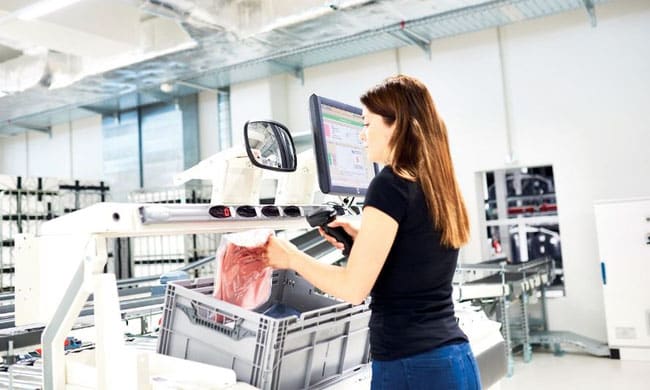CFG: eCommerce Logistics Day, VIE, 25 SEP 19 – PART 2
Before deliveries get as far as the last mile, they need to be available in a warehouse and quickly accessed for parcelling. The flood of return shipments also needs sorting, registering, and storing.
At the Vienna-held event, delegates were presented scalable cube storages solutions which optimize every last inch of space in the warehouse (and can be expanded/diminished at a later stage), and intelligent sorting and steering systems, enabling space and time savings even in the smallest warehouse.
In a nutshell, even mini vendors can have an intelligent storage system measuring just 2.5m x 1.4m x 1.4m!
Opportunities for efficient, intelligent storage and selection solutions were:
- Cube storage: Box-like structures that can be assembled like Lego, quickly and using minimum electricity (“less than the average vacuum cleaner”) since they run on 230V. One customer present stated he had managed to reduce his warehouse space from 2900m² to just 780m² using this solution
- Smart bags: Returns and single items can be put into RFID coded bags and stored separately for quick inventory and access when required. Again, space and time savings were reported
- Efficient picker systems quickly moving on a number of parallel levels through the storage racks, automatically selecting required parts and bringing them to the packers
- Ergonomic shuttles moving autonomously towards human packers, and automatically adjusting their height to provide the employee with a comfortable workspace
Storage and delivery efficiencies depend on functioning, flexible processes.
Other efficiency gains that were discussed were the possibility of sharing robots between partner companies using the same cube storage system, but having different business peaks (to reduce cost investments of having to each buy and store more robots to cope with peaks), being able to use floor space more economically, and – an important factor in customer relationship management – being able to personalise packaging to create that wow! effect to gain more sales in future.
The prerequisite to these solutions being implemented, are clear process structures. The best storage system can only bring benefits if the process it has been built to carry out is also as lean as it can be. Delegates were reminded to look at the status quo and work with process consultants first, before investing in automated solutions. Once the solutions are invested in, however, they lead to massive savings. One example, where a smart scanning glove was implemented, a timesaving of 3.5 hours/day, and a 20-35% customer increase was quoted. Another company achieved its return-on-investment in just 30 days with the increased process efficiencies gained.
On the other hand, once in place, these systems can also highlight process weaknesses, allowing for continuous process improvements. The efficiency potentials in terms of cost, space, time and – most importantly – comfort and workplace improvements for people in the work process, are impressive.
The Amazon Elephant.
The elephant in the room, though it was talked about in terms of (partly successful) legislative and legal cases to push for fairer taxation and customer protection, is Amazon. Amazon is consistently working to provide an all-inclusive process, even to the point of having its own airlines, sorting warehouses, to-door delivery services, and it controls a massive cloud of Big Data which it has the money and resources to make best use of. Though the initial comment was “The customer decides which web shop to use,” in fact many digital platforms use predictive data (in Amazon’s case, gained in part also from the 60,000 functions that Alexa has and where people freely – often unknowingly – provide a great deal of useful information) to actually prime customers to buy from them, by regularly exposing them to products that they do not even yet know they need up to 3 months (and longer) in advance before they actually buy them. So, who really makes the buying decision?
Technological and digital efficiencies in eCommerce logistics and the David/Goliath question.
“Amazon will become a competitor” was stated at one time during the day. However, it was also pointed out near the start of the conference that, digitally, Europe is a “developing country [sic]” and that Asia, the USA are far more advanced, whilst Africa is leapfrogging ahead when it comes to making smart use of technology.
What the conference demonstrated, was that there are a number of very good technology suppliers in Germany and Austria each offering similar systems, but the question at the end of the day is: which of these systems will lead, globally? And can the European David really compete, digitally, against the American and Asian Goliaths on the eCommerce scene? It is not “Amazon will become a competitor”: Amazon, along with the AliBabas of this world, is already light-years ahead in its strategy.
Autor: Brigitte Gledhill


